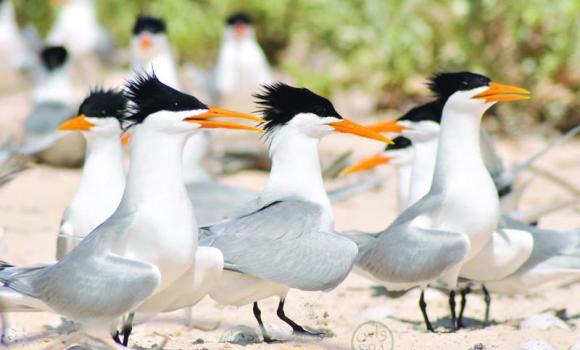| A dolphin infected with morbillivirus |
One of the United States' most prominent experts on the morbillivirus Dr. Gregory Bossart recently pointed out that up to fifty percent of the Florida Keys' native bottlenose dolphin population could perish as a result of the newly discovered spread of the morbillivirus epidemic from the Indian River Lagoon. A notable example of the epidemic in the Florida Keys came on November 7 when a bottlenose dolphin washed up seriously ill on a beach at Bahia Honda State Park and died later that day. Morbillivirus, which is a disease similar to measles that is highly contagious among marine mammals, has claimed lives of more than 1,560 dolphins from New York to Florida since July 2013. It is an immunosuppresive malady that essentially renders marine mammals exposed to an array of other deadly diseases and is known to attack the lungs and neurological systems of whales and dolphins. The virus spreads through water droplets in the spray when dolphins and their relatives exhale at the surface and is transferred when the droplets fall down on other members in a pod. As a result, scientists are afraid that the virus could destroy a large part of the Keys' dolphin population because the animals are social by nature. Another worry is that the population of dolphins in the Florida Keys have not developed immunity to the virus making them more likely to die from infection. Dr. Bossart indicated that the dolphins in the Indian River Lagoon have a high rate of infection, but not a high mortality rate. National Oceanic and Atmospheric Administration spokeswoman Allison Garrett added that there have been no reports of sick or deceased dolphins since the one that died at Bahia Honda State Park. Dr. Bossart further stated that marine mammal facility managers should be extra careful because there might be other ways the virus might spread.
It is extremely essential to research this fatal disease in order to help save populations of bottlenose dolphins and other marine mammals from being further depleted. Dolphins maybe widely viewed as "star attractions" at several marine parks, but they are also wild animals by nature. Like most wild animals, they play a crucial role in the marine ecosystem by keeping the fish and other marine animal populations in check. With this ongoing morbillivirus epidemic, the dolphin population along the entire East Coast of the U.S is in dire jeopardy which would eventually lead to a local extinction. This would probably lead to other marine mammal species such as whales becoming infected with the virus resulting in a similar catastrophe. This is why it is highly crucial to meticulously research the morbillivirus disease in an effort to find cure for dolphins and other marine mammals that are immune to this life-threatening illness. Dr. Bossart pointed out that whatever is happening in the ocean water could be reflection of what is occurring on land.
View article here
